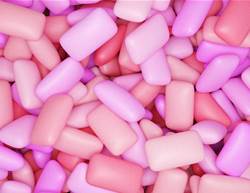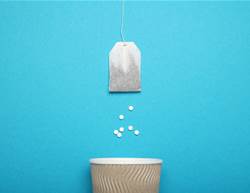- Sucralose, a chemical found in the popular artificial sweetener Splenda, may cause DNA damage and cancer, according to a new study.
- The study looked at cells outside of the human body, a process known as in vitro.
- Experts offer artificial sweetener alternatives.
If you are trying to cut back on sugar but still have a sweet tooth, you may reach for common artificial sweeteners, like Splenda. And while cutting down on added sugar is often considered the “healthy” option, consuming artificial sweeteners could be doing more harm than good.
In fact, sucralose, a chemical found in a popular artificial sweetener, may cause cancer and DNA damage, according to a new study.
The study, published in the Journal of Toxicology and Environmental Health, looked at how sucralose, a no-calorie sweetener, could be potentially harmful to human cells.
Researchers looked at sucralose-6-acetate, a structurally similar molecule that forms when sucralose is broken down in the gut by gut bacteria. This chemical is also produced in the manufacturing of sucralose. It can be found in small amounts in some commercial sucralose products, like Splenda.
The results from this study support the growing evidence of the harmful effects of artificial sweeteners, such as an increased risk of heart disease and cancer. Here’s what you need to know.
What does sucralose do to the body?
In the experiment, researchers exposed human blood cells to sucralose-6-acetate and the results showed signs of genotoxicity—the ability of harmful substances to damage DNA.
Along with the impact on DNA directly, researchers found that sucralose caused damage to the gut lining, a condition known as leaky gut.
They also observed that sucralose caused an increase in gene activity linked to cancer, inflammation and oxidative stress, which can cause tissue and cell damage.
Where can you find sucralose?
Sucralose is a general-purpose sweetener for food. It’s about 600 times sweeter than regular sugar, says Jackie Newgnet, nutritionist and author of The Plant-Based Diabetes Cookbook.
Shoppers are familiar with it under the brand name Splenda, she adds, which is popular for many reasons, one of which is that “it’s heat stable, which means it can be used in baking while maintaining its sweetness.”
Is sucralose, or Splenda, safe to use daily?
Food Standards Australia and New Zealand says an acceptable daily intake (ADI) of sucralose is 0 to 15mg per kilogram of body weight per day. For example, 5mg per kg per day for a 60kg person would equal a whopping 23 packets a day.
This is the safety margin based on animal studies but this new research may point to using much less sucralose, if any.
Sugar substitute alternatives
If you’re using common sugar substitutes, you may want to look at alternative ways of sweetening food and drinks.
Start sweetening with wholesome fruits first—you’ll get a sweet taste with benefits, suggests Newgent.
“If a fruit or fruit product won’t work for the food, beverage, or recipe you’re sweetening, I suggest natural liquid sweeteners like date syrup, coconut nectar, maple syrup, or honey.”
If you’re on a low-carb diet, try a zero-calorie, plant-derived pick, like monk fruit or stevia sweetener.
The bottom line
While this new study does raise concerns, it was an in-vitro study, meaning it took place outside of the body and in a controlled environment.
More studies within the human body are needed to make more definitive recommendations, says Newgent.
“In the meantime, if you plan to keep using sucralose, stick to single digits, like two packets a day.








